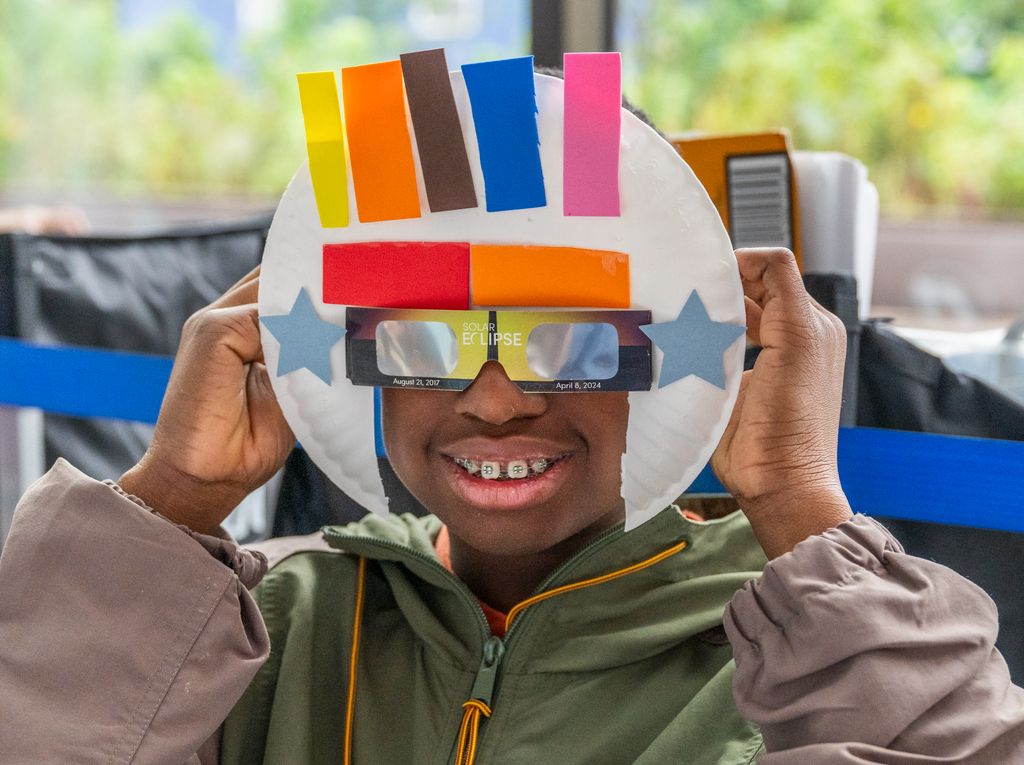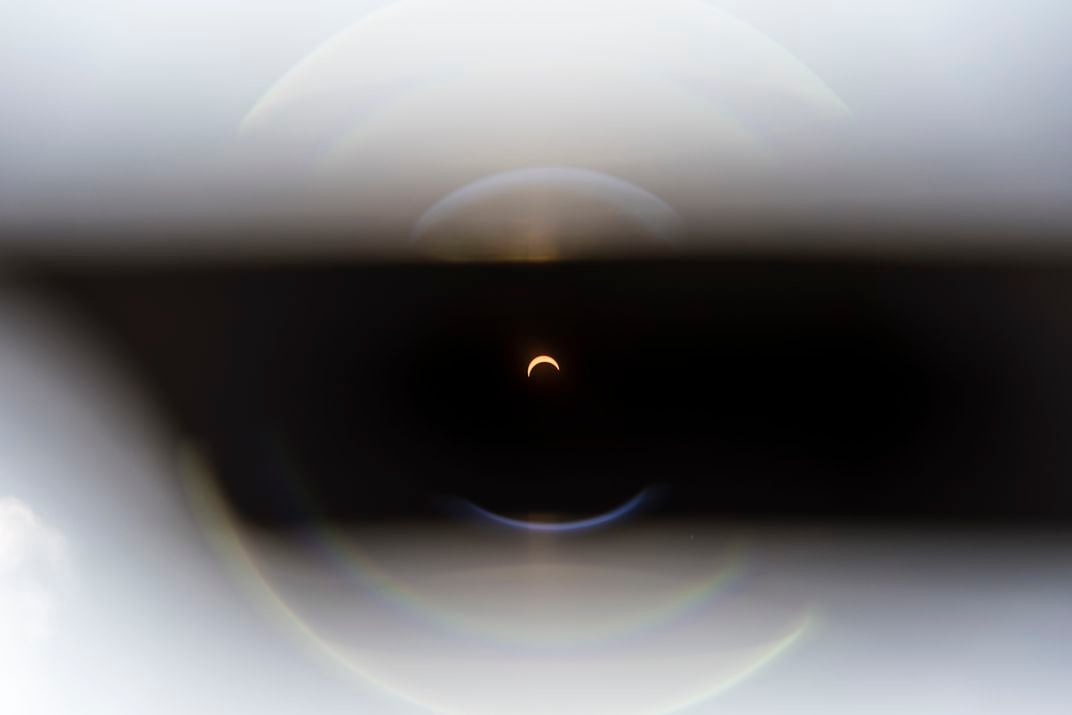Celebrate the April 8 Solar Eclipse With the National Air and Space Museum
On April 8, 2024, a total solar eclipse will cross North America. For those not within the path of totality, a partial eclipse will be visible from everywhere in the contiguous United States. Learn about the science and safety of eclipses with the National Air and Space Museum.
/https://tf-cmsv2-smithsonianmag-media.s3.amazonaws.com/filer_public/59/3c/593c44bc-565e-44b6-acf3-2def246ccf5d/nasm2017-02421_-_copy.jpg)
The Smithsonian’s National Air and Space Museum will serve as a major source of information, educational activities and experiences on and around the total solar eclipse taking place April 8. The next total solar eclipse will not be visible in the contiguous United States for over 20 years.
The Museum will hand out eclipse glasses to the public in advance of the eclipse, host eclipse-viewing opportunities and other events in the lead-up to the eclipse and provide eclipse-related resources for educators and parents/caregivers across the country.
Solar Eclipse Glasses
The Museum will hand out limited supplies of solar eclipse glasses at both of its museum locations.
Glasses will be distributed between Monday, March 25 and Sunday, April 7. Distribution begins each day at 12 pm and goes until 4 pm or until that day's allotment of glasses has been fully distributed, whichever comes first. The glasses will be distributed at the National Air and Space Museum in Washington, DC (timed entry passes are required to enter the Museum) and at the Steven F. Udvar-Hazy Center in Chantilly, Virginia. Full details can be found on the museum's website.
Solar eclipse glasses are provided by the National Oceanic and Atmospheric Administration (NOAA), the U.S. National Science Foundation (NSF) and NASA.

Eclipse-Viewing Events
On April 8, the Museum will host the “Solar Eclipse Festival on the National Mall” in Washington, D.C. This event, presented in collaboration with other Smithsonian museums, NASA, NOAA, NSF and the National Radio Astronomy Observatory, will run from noon to 4 p.m. Attendees will be able to participate in many activity stations and view the sun using a variety of safe telescopes. A limited supply of solar eclipse glasses will be available for event attendees. “Solar Eclipse Festival on the National Mall” is made possible by the support of Phillip N. and Mary A. Lyons.
Visitors will also be able to view the eclipse through safe solar telescopes at the Museum’s Steven F. Udvar-Hazy Center in Chantilly, Virginia, from 2 to 4 p.m. For those not in the Washington area, the Museum has compiled a map of eclipse-viewing events taking place at Smithsonian Affiliates across the United States. The map features over 15 events, with additional events being added.

Other Eclipse Events
The museum will also host events in the lead-up to the eclipse to teach learners of all ages about the sciences of eclipses and get them excited about this rare celestial event. The museum will host the “Get Ready for the Solar Eclipse Family Day” April 6 from 10 a.m. to 2 p.m. at the Museum’s location in Washington, D.C. Attendees can participate in eclipse-related activities and pick up a pair of solar eclipse glasses. The event is free, but timed-entry passes are required and can be reserved on the museum’s website. Virtual family activities (launching April 5) will be available for those unable to attend in person. “Soar Together at Air and Space” family days are made possible by the support of Northrop Grumman.
During the month of April, the Museum’s “Flights of Fancy Story Time” series will be eclipse themed, featuring a reading of the children’s book Eclipse by Andy Rash and a hands-on activity to make safe eclipse-viewing tools. Eclipse-themed story times will take place at the Museum’s location in Washington every Thursday in April at 11 a.m., at the Steven F. Udvar-Hazy Center in Chantilly every Tuesday and Thursday in April at 11 and 11:30 a.m., and virtually on Zoom April 5 at 10 a.m. Additionally, a video story time was released on the Museum’s YouTube channel March 19. “Flights of Fancy Story Time” is made possible by the support of the Conrad N. Hilton Foundation.
Virtual Eclipse Resources
The Museum also has available on its website educational resources that teachers, parents and caregivers can use to teach children about eclipses. This includes hands-on activities, videos and materials that can be incorporated into lesson plans. Astronomy education is made possible by the support of Thomas W. Haas Foundation, Otto Haas Charitable Trust, The Waterman Trust and Wyncote Foundation.
The Museum’s “AirSpace” podcast released an episode about eclipses. "When the Sun Went Out" looks back at an 1142 eclipse that served as a sign to the Seneca to join the Haudenosaunee Confederacy, one of the oldest democratic governments, also known as the Iroquois League or the League of Six Nations. “AirSpace” is made possible by the support of Olay.
On April 2, the Museum will release an eclipse-themed episode of “STEM in 30,” its Emmy-award winning educational webcast series for middle school teachers and students. Each episode of “STEM in 30” is accompanied by learning standards and teacher tips for incorporating it into classrooms. “STEM in 30” is made possible by the support of Boeing, Hexcel and Safran.
The museum is also selling limited-edition merchandise celebrating the solar eclipse. Items such as T-shirts, posters and mugs can be purchased for a limited time.
Full details about all of the Museum’s eclipse activities and important information about how to view eclipses safely can be found on its website.
